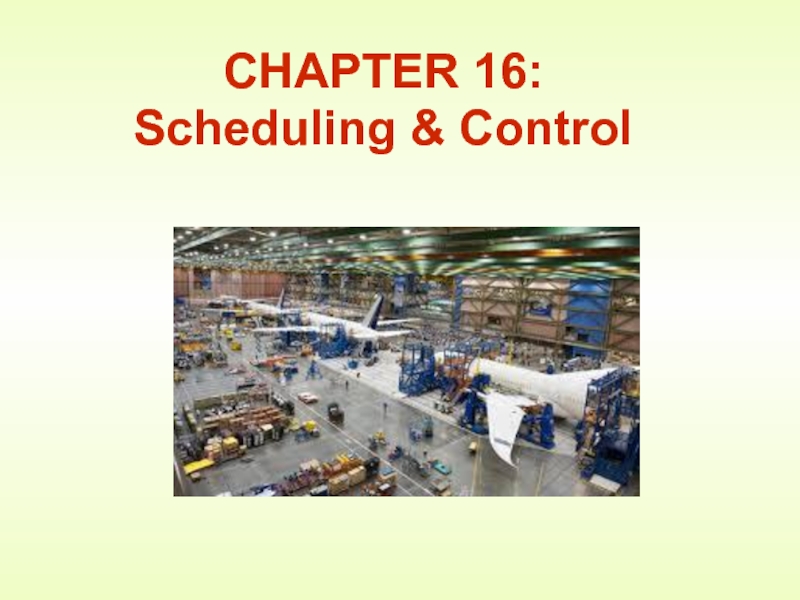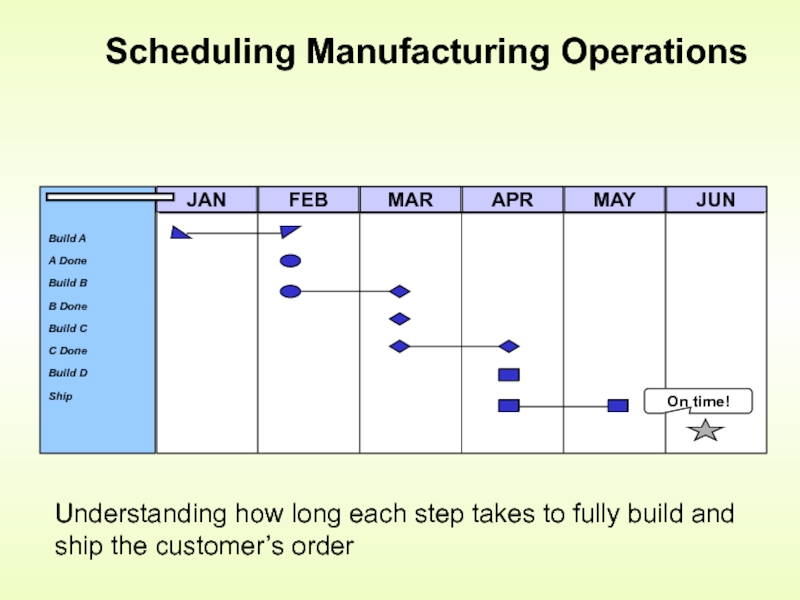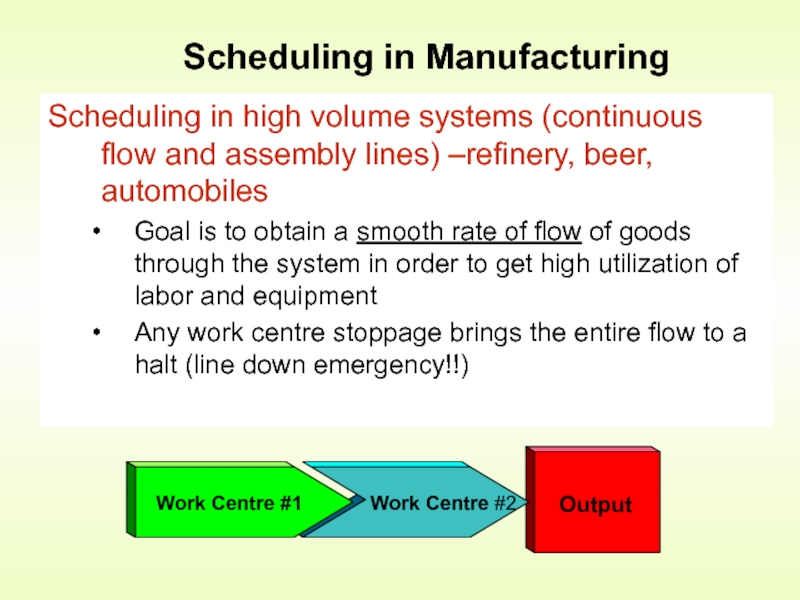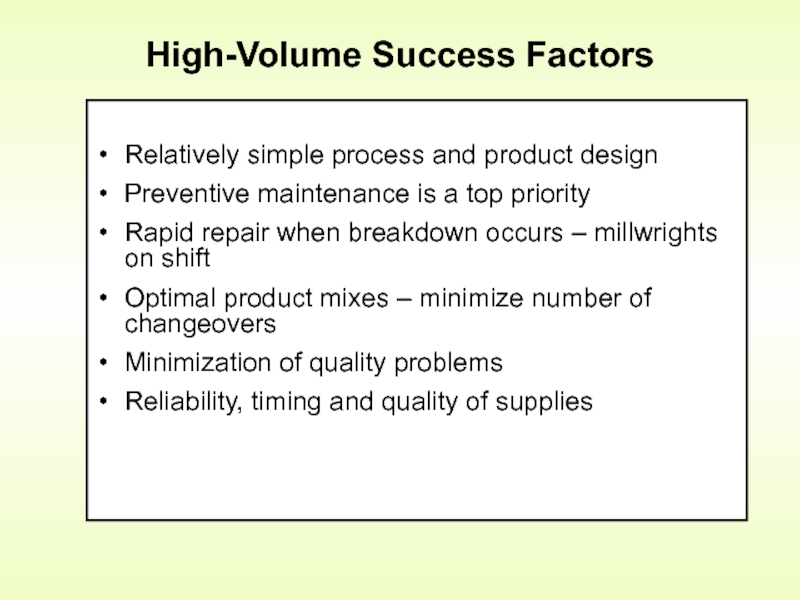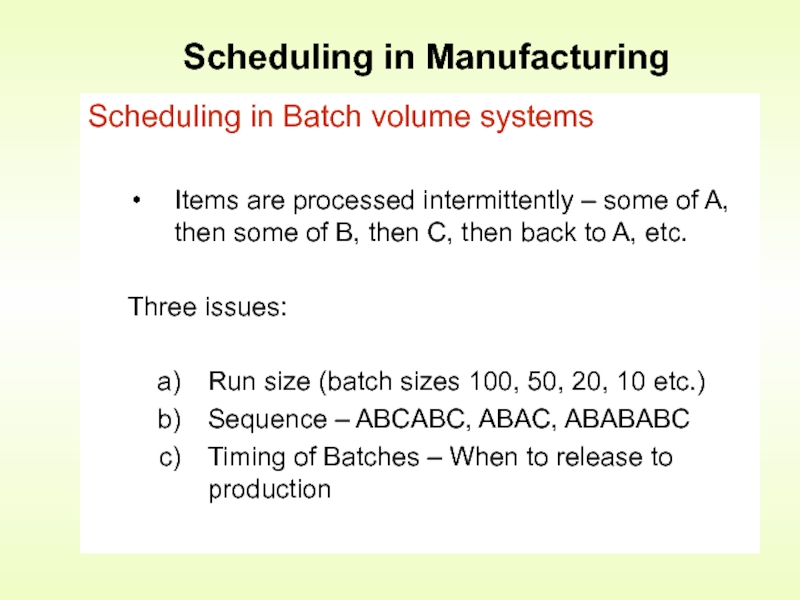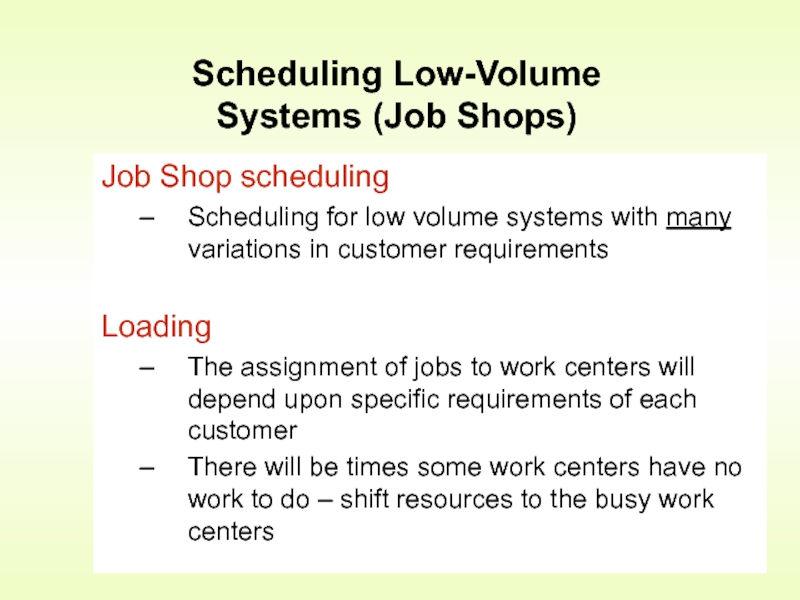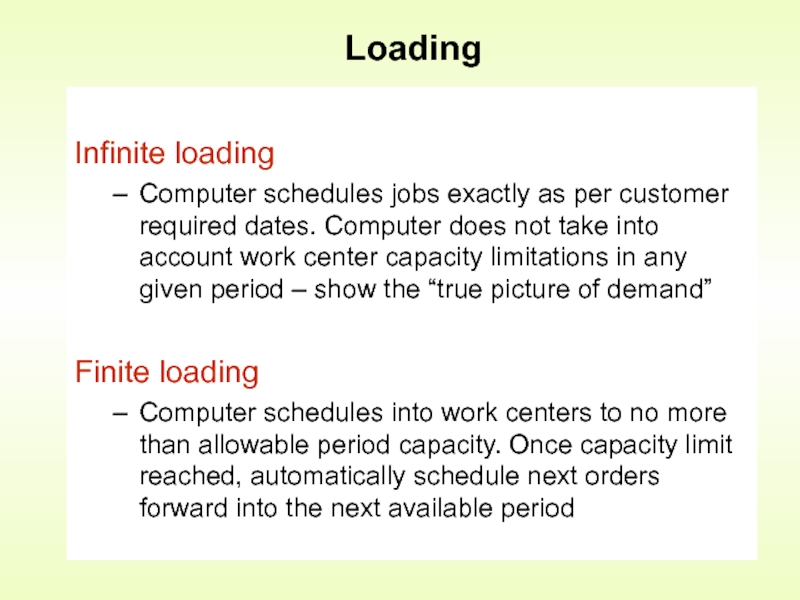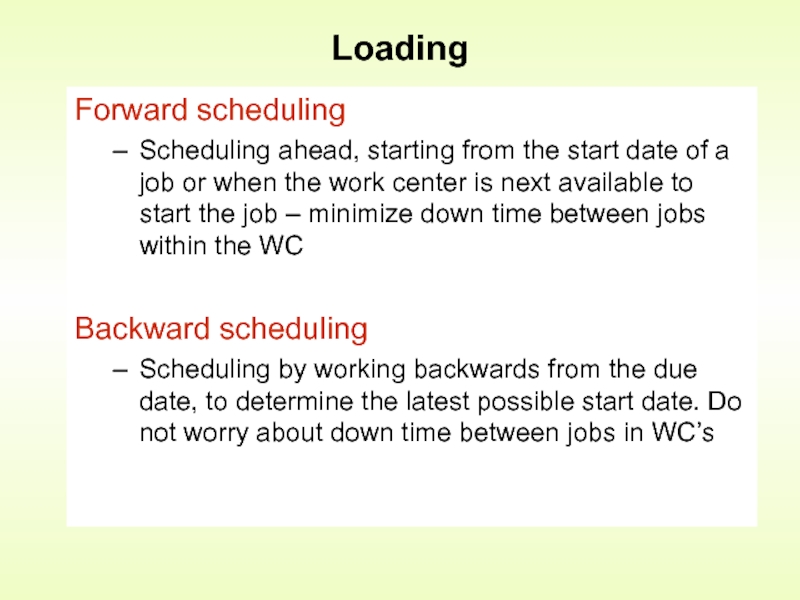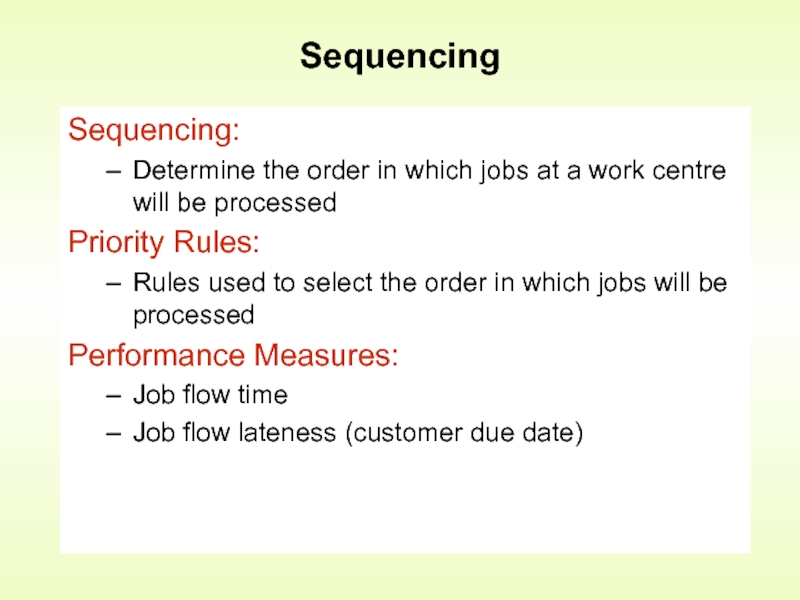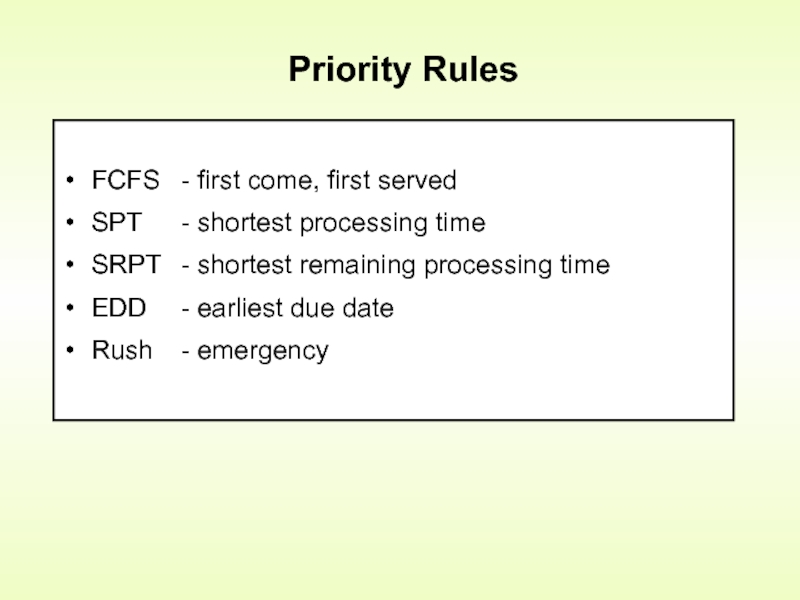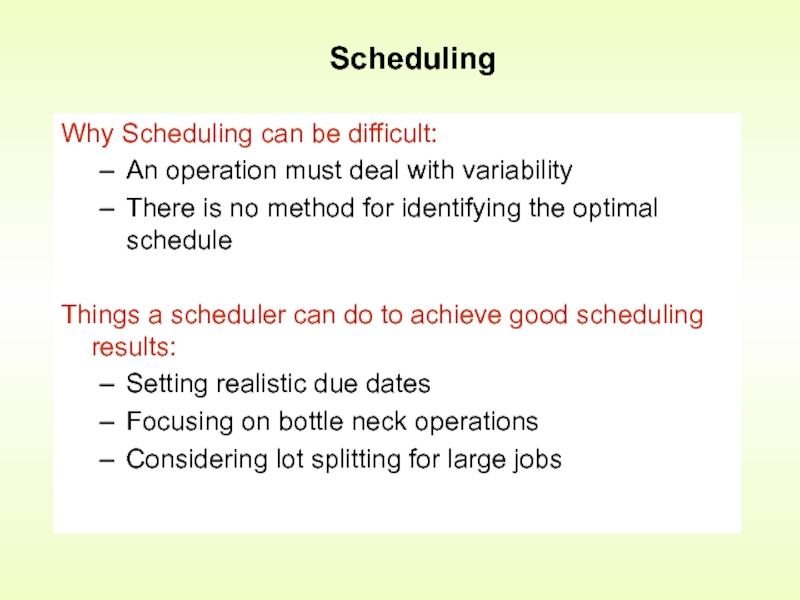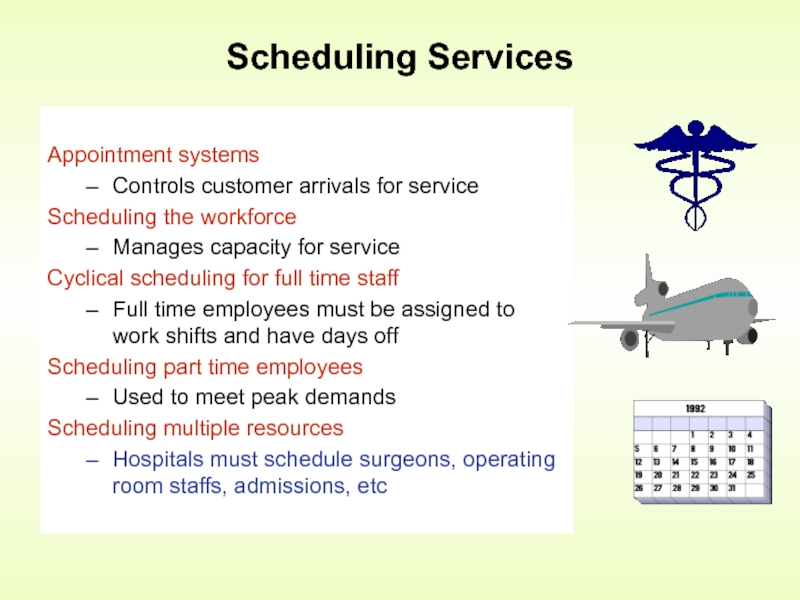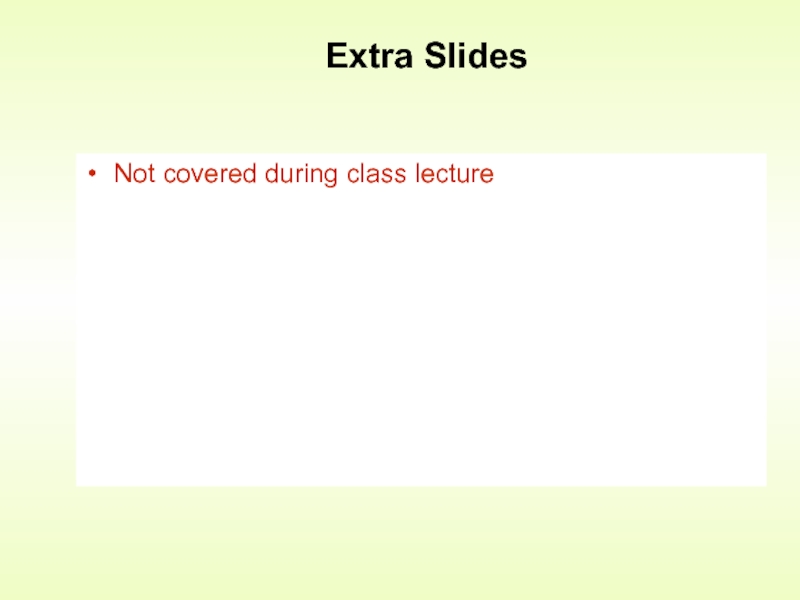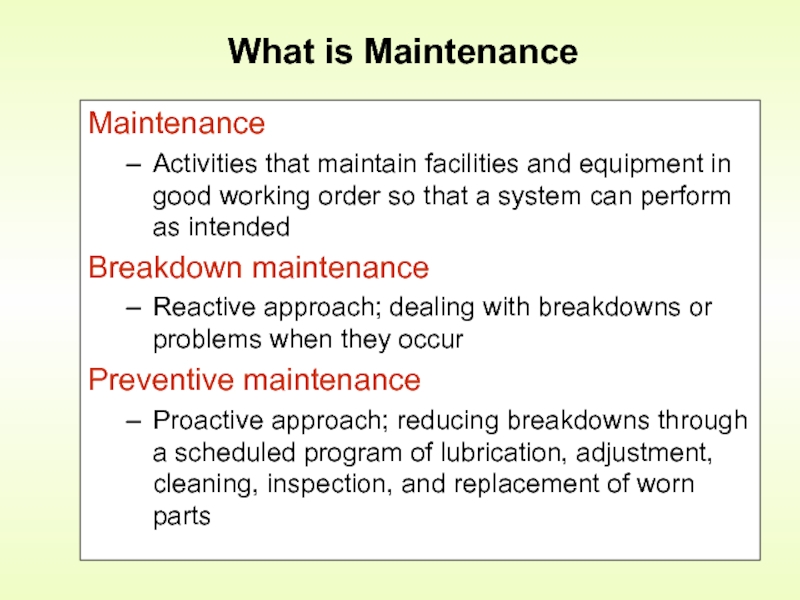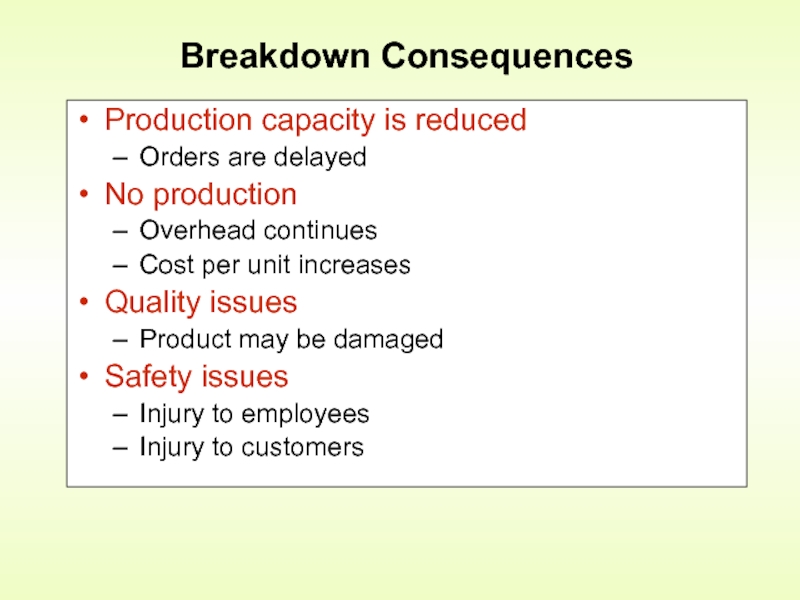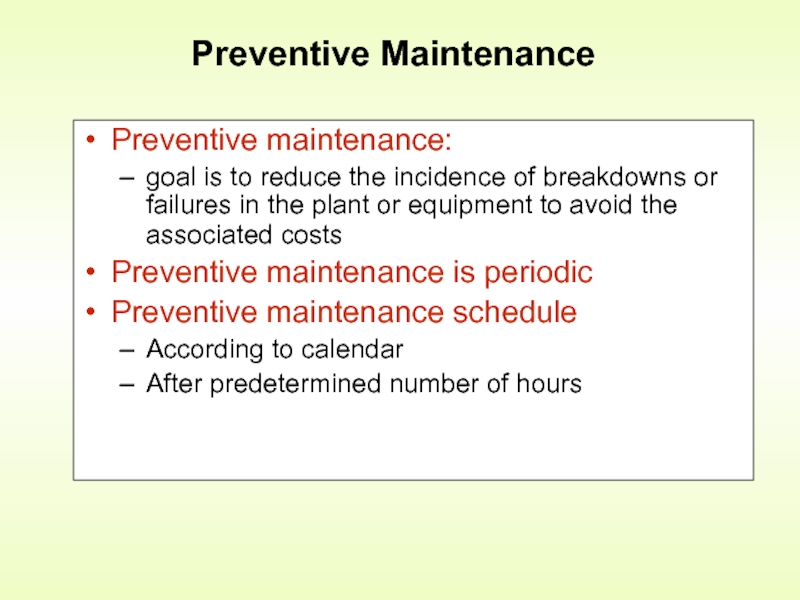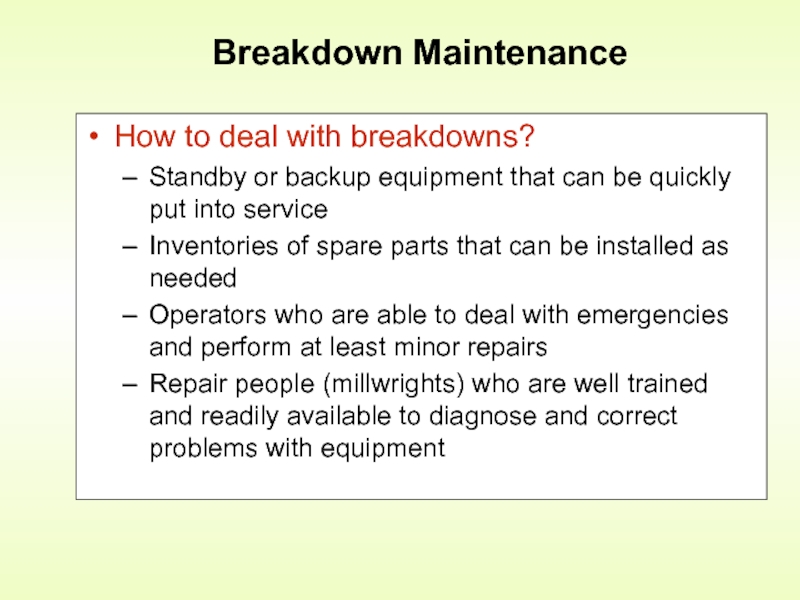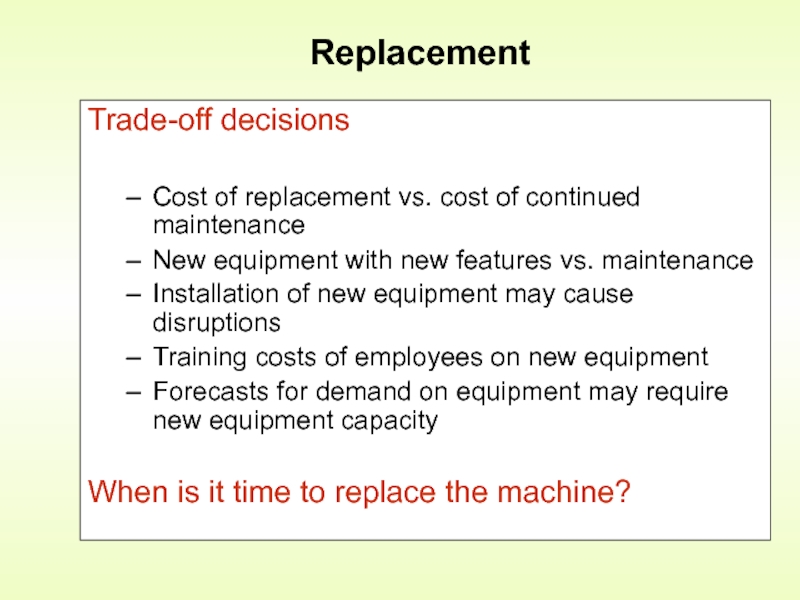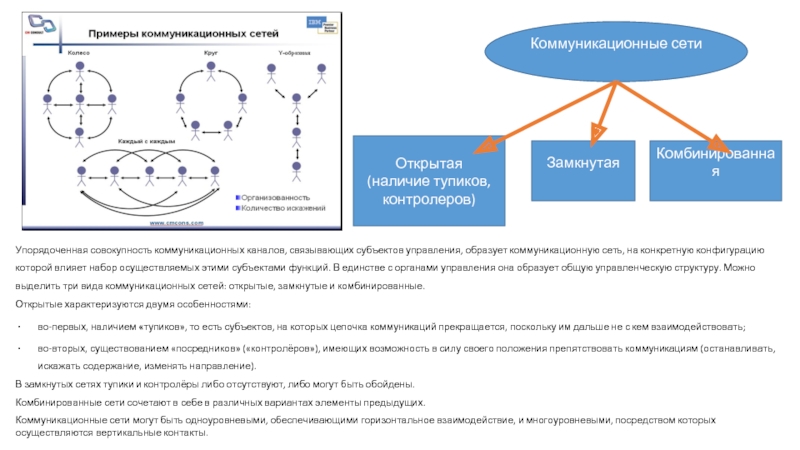- Главная
- Разное
- Дизайн
- Бизнес и предпринимательство
- Аналитика
- Образование
- Развлечения
- Красота и здоровье
- Финансы
- Государство
- Путешествия
- Спорт
- Недвижимость
- Армия
- Графика
- Культурология
- Еда и кулинария
- Лингвистика
- Английский язык
- Астрономия
- Алгебра
- Биология
- География
- Детские презентации
- Информатика
- История
- Литература
- Маркетинг
- Математика
- Медицина
- Менеджмент
- Музыка
- МХК
- Немецкий язык
- ОБЖ
- Обществознание
- Окружающий мир
- Педагогика
- Русский язык
- Технология
- Физика
- Философия
- Химия
- Шаблоны, картинки для презентаций
- Экология
- Экономика
- Юриспруденция
Scheduling & control. Chapter 16 презентация
Содержание
- 1. Scheduling & control. Chapter 16
- 2. Introduction Scheduling Establishing the timing of the
- 3. Scheduling Manufacturing Operations Understanding how long
- 4. Scheduling in high volume systems (continuous flow
- 5. High-Volume Success Factors Relatively simple process
- 6. Scheduling in Batch volume systems
- 7. Scheduling Low-Volume Systems (Job Shops) Job
- 8. Infinite loading Computer schedules jobs exactly
- 9. Forward scheduling Scheduling ahead, starting from the
- 10. Sequencing Sequencing: Determine the order in
- 11. Priority Rules FCFS - first come,
- 12. Scheduling Why Scheduling can be difficult:
- 13. Scheduling Services Appointment systems Controls customer
- 14. Service Operation Problems Cannot store or inventory
- 15. Extra Slides Not covered during class lecture
- 16. Maintenance Activities that maintain facilities and
- 17. Reasons for keeping equipment running: Avoid
- 18. Production capacity is reduced Orders are delayed
- 19. Preventive maintenance: goal is to reduce
- 20. Predictive Maintenance Predictive or condition based maintenance
- 21. Breakdown Maintenance How to deal with breakdowns?
- 22. Replacement Trade-off decisions Cost of replacement
Слайд 2Introduction
Scheduling
Establishing the timing of the use of equipment, facilities & labor
Shop Floor Control
Execution of the schedule – Meeting customer due dates and production manufacturing plans
Objective of Scheduling
To achieve trade-offs among conflicting goals, which include efficient utilization of staff, equipment and minimization of customer waiting time, inventories and production times
Слайд 3Scheduling Manufacturing Operations
Understanding how long each step takes to fully build
Слайд 4Scheduling in high volume systems (continuous flow and assembly lines) –refinery,
Goal is to obtain a smooth rate of flow of goods through the system in order to get high utilization of labor and equipment
Any work centre stoppage brings the entire flow to a halt (line down emergency!!)
Scheduling in Manufacturing
Слайд 5High-Volume Success Factors
Relatively simple process and product design
Preventive maintenance is a
Rapid repair when breakdown occurs – millwrights on shift
Optimal product mixes – minimize number of changeovers
Minimization of quality problems
Reliability, timing and quality of supplies
Слайд 6Scheduling in Batch volume systems
Items are processed intermittently – some
Three issues:
Run size (batch sizes 100, 50, 20, 10 etc.)
Sequence – ABCABC, ABAC, ABABABC
Timing of Batches – When to release to production
Scheduling in Manufacturing
Слайд 7Scheduling Low-Volume
Systems (Job Shops)
Job Shop scheduling
Scheduling for low volume systems
Loading
The assignment of jobs to work centers will depend upon specific requirements of each customer
There will be times some work centers have no work to do – shift resources to the busy work centers
Слайд 8
Infinite loading
Computer schedules jobs exactly as per customer required dates. Computer
Finite loading
Computer schedules into work centers to no more than allowable period capacity. Once capacity limit reached, automatically schedule next orders forward into the next available period
Loading
Слайд 9Forward scheduling
Scheduling ahead, starting from the start date of a job
Backward scheduling
Scheduling by working backwards from the due date, to determine the latest possible start date. Do not worry about down time between jobs in WC’s
Loading
Слайд 10Sequencing
Sequencing:
Determine the order in which jobs at a work centre
Priority Rules:
Rules used to select the order in which jobs will be processed
Performance Measures:
Job flow time
Job flow lateness (customer due date)
Слайд 11Priority Rules
FCFS - first come, first served
SPT - shortest processing time
SRPT - shortest
EDD - earliest due date
Rush - emergency
Слайд 12Scheduling
Why Scheduling can be difficult:
An operation must deal with
There is no method for identifying the optimal schedule
Things a scheduler can do to achieve good scheduling results:
Setting realistic due dates
Focusing on bottle neck operations
Considering lot splitting for large jobs
Слайд 13Scheduling Services
Appointment systems
Controls customer arrivals for service
Scheduling the workforce
Manages capacity for
Cyclical scheduling for full time staff
Full time employees must be assigned to work shifts and have days off
Scheduling part time employees
Used to meet peak demands
Scheduling multiple resources
Hospitals must schedule surgeons, operating room staffs, admissions, etc
Слайд 14Service Operation Problems
Cannot store or inventory services ahead of time
Customer
Scheduling service involves:
Customers
Workforce
Equipment
Слайд 16Maintenance
Activities that maintain facilities and equipment in good working order
Breakdown maintenance
Reactive approach; dealing with breakdowns or problems when they occur
Preventive maintenance
Proactive approach; reducing breakdowns through a scheduled program of lubrication, adjustment, cleaning, inspection, and replacement of worn parts
What is Maintenance
Слайд 17Reasons for keeping equipment running:
Avoid production disruptions – “Factory down”
Maintain high
Avoid missed customer delivery dates
Maintenance Reasons
Слайд 18Production capacity is reduced
Orders are delayed
No production
Overhead continues
Cost per unit increases
Quality
Product may be damaged
Safety issues
Injury to employees
Injury to customers
Breakdown Consequences
Слайд 19Preventive maintenance:
goal is to reduce the incidence of breakdowns or
Preventive maintenance is periodic
Preventive maintenance schedule
According to calendar
After predetermined number of hours
Preventive Maintenance
Слайд 20Predictive Maintenance
Predictive or condition based maintenance
Maintenance activities based on historical data
Reliability centered maintenance
Program to reduce the effect of each major cause of failure problem for equipment functions
Total productive maintenance (TPM)
JIT approach where workers perform preventive maintenance on the machines they operate
Слайд 21Breakdown Maintenance
How to deal with breakdowns?
Standby or backup equipment that can
Inventories of spare parts that can be installed as needed
Operators who are able to deal with emergencies and perform at least minor repairs
Repair people (millwrights) who are well trained and readily available to diagnose and correct problems with equipment
Слайд 22Replacement
Trade-off decisions
Cost of replacement vs. cost of continued maintenance
New equipment with
Installation of new equipment may cause disruptions
Training costs of employees on new equipment
Forecasts for demand on equipment may require new equipment capacity
When is it time to replace the machine?
